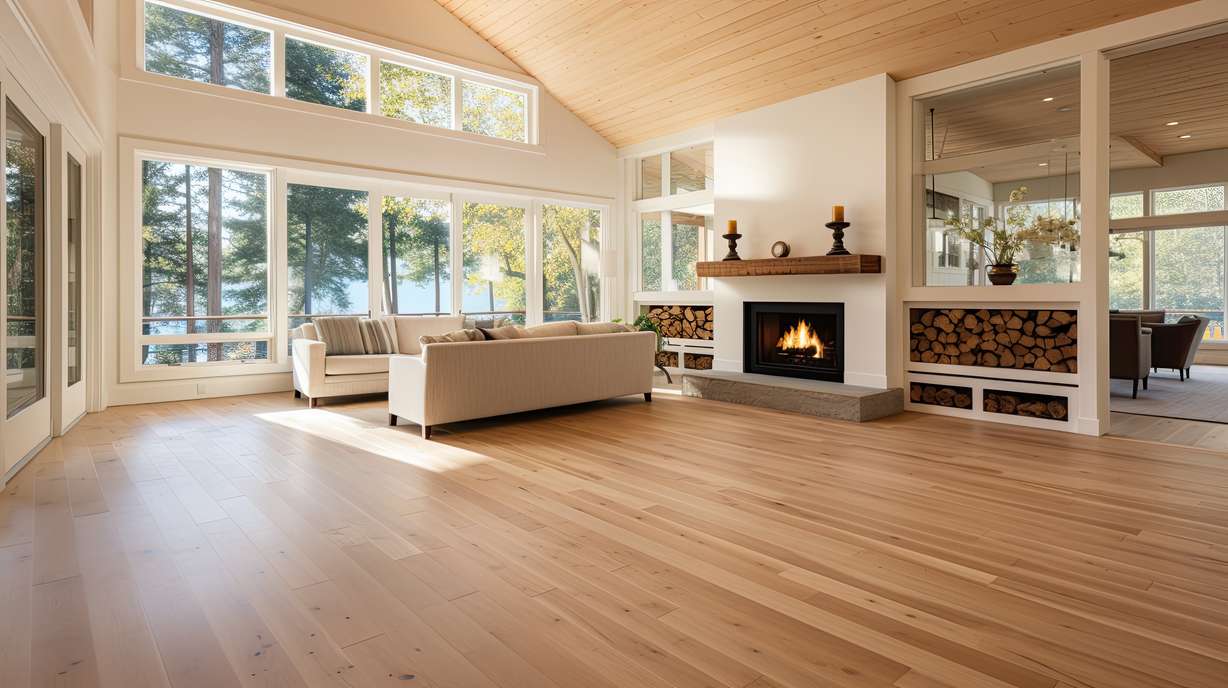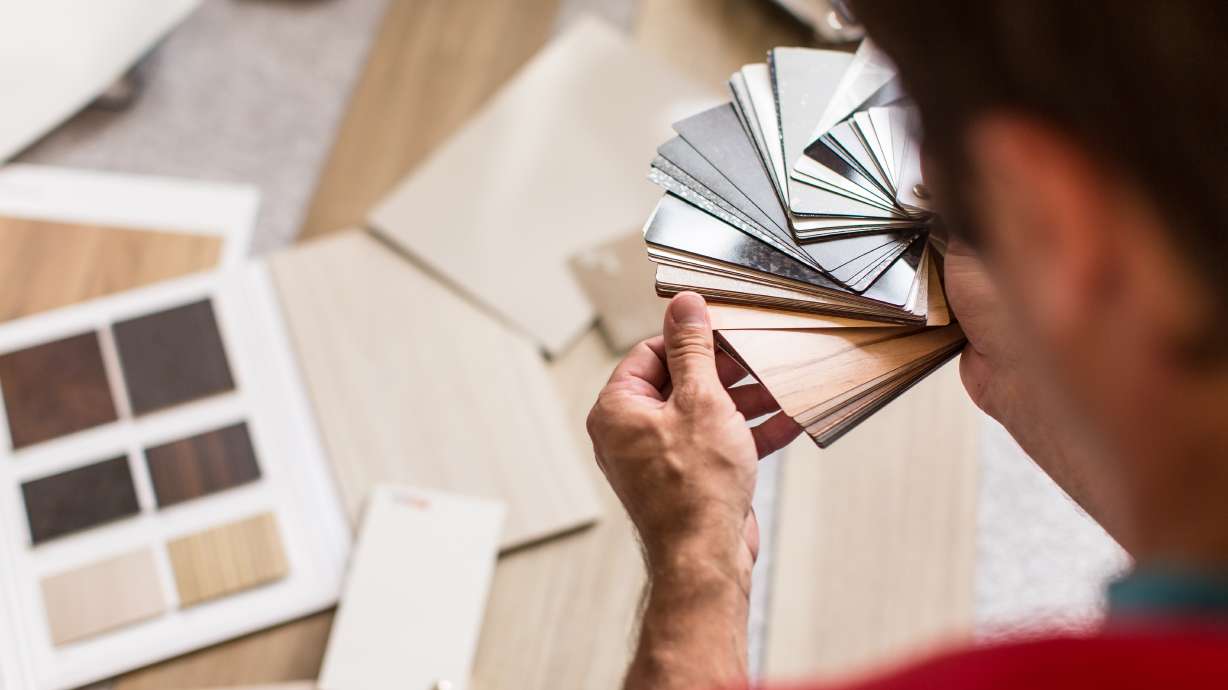Estimated read time: 5-6 minutes
Let's be honest: picking out flooring for your home can be surprisingly tricky!
It's a big decision that can make or break your home design, since flooring makes up a large visual part of your home.
Plus, there are so many colors, textures, and materials to choose from, you want to make sure you nail down (pun intended) the right choice for your family!

Since each room in your home has a different function — and therefore different flooring needs — you might not know where or how to start. Here are nine tips for choosing the best types of flooring for your spaces while maintaining a cohesive look throughout your home.
Use the rule of three
Step one of choosing floors? Learn the golden rule.
Mixing and matching is a great way to have fun with your flooring, but it's easy to take it too far. That's why designers and flooring experts swear by the "rule of three."
Kate Nicholson writes in House Digest that the directive can save you from visual clutter in your home design. "This rule applies to many aspects of art, design, and architecture; in the world of flooring, it means only using a maximum of three flooring finishes across your entire property — say, flagstones in the kitchen, hardwood throughout the living spaces, and teeny hexagonal tiles in the bathrooms."
If your home has an open floor plan, you may even want to stick to only two flooring types to maximize visual flow.
Think short-term versus long-term
Next, take a step back and look at the big picture. Are you just trying to spruce up a short-term home?
Or find the perfect, lasting material for your forever home? Your flooring choices should depend on your answer.
For example, if you're in a home for the short term and just want to replace the decades-old orange shag carpet with an affordable laminate or carpet, that's an easy choice.
On the other hand, designing your dream home may take a bit more thought and financial investment. You'll want high-quality, timeless finishes like classic hardwood or natural stone tile.
Consider foot traffic
Take into account how much foot traffic each area receives. High-traffic spaces like hallways, kitchens, and entryways need durable, scratch-resistant materials such as LVP (Luxury Vinyl Plank) or tile. In low-traffic areas like bedrooms, softer options like carpet or hardwood can work well.
A recent Consumer Reports article found that porcelain tile was the most durable material when tested using an abrasion machine that resembles years of foot traffic. LVP and laminate also held up well.
Keep safety in mind
Carpet is the safest option for children's bedrooms and playrooms, providing more traction for little feet and a soft landing in case of falls.
Slippery floors can also be a hazard for dogs — especially senior pets — so factor that into your decision-making. If you choose a slippery surface like tile, plan to install rugs or other traction in areas where pets will be spending time.
What's your maintenance style?
Some flooring needs more upkeep than others. How much time and money do you want to spend on flooring maintenance? If you're a decidedly low-maintenance person, consider tile, LVP, or laminate.
If you're ready to baby your floors like you baby your kids and pets, you've got the green light for hardwood, which needs regular refinishing or sealing.

Carpet also requires a bit of upkeep since it stains easily and needs to be deep cleaned every 12-18 months, according to Better Homes and Gardens. Make sure and check the warranty on your particular carpet.
Plan for moisture resistance
This one is a no brainer: everyone should agree that carpet has no place in a bathroom! If a room has some level of water exposure—think bathrooms, as well as kitchens, mud rooms, and laundry rooms—you'll want to choose a hard, nonporous surface.
Look at waterproof materials like vinyl, tile, and stone. Avoid wood or carpet to prevent warping, mold, and other unpleasant homeowner problems.
Find your style
Your floors should reflect your personal taste while complementing your overall design vision. Love rustic farmhouse charm? Go for wide-plank or distressed wood (or a laminate that mimics the same style).
Prefer a modern vibe? Sleek tile or polished concrete might be a match for your Scandi style. Traditionalists can go for a medium-toned hardwood or classic patterned tile. Whatever your style, choose a flooring type that enhances your space and feels authentically you.
Be budget-conscious
Maybe you love the look of classic wood floors but can't cough up the cash needed. LVP has come such a long way in recent years that in some cases, you'll be hard-pressed to discern between the vinyl and real wood!
In general, the priciest materials are hardwood and natural stone such as marble. Mid-range offerings include engineered wood, LVP, and tile. Budget shoppers have their choice of basic vinyl, laminate, or carpet.
Don't forget about noise
It's easy to get caught up in home design decisions without picturing how it will be to actually live in the space.

If you need a quiet home for work or are sensitive to echoes and noise, carpet is probably your best bet.
If you have an open floor plan, you'll need to incorporate carpet or large area rugs to absorb sound. Likewise, it's a good idea to install carpet in second-story rooms to cut down on clattering footsteps above the main floor.
Get expert guidance from Giant Carpet One
When it comes to selecting flooring for your home, you can't make a decision on paper. A trip to Giant Carpet One will give you the opportunity to see, touch and feel your options, from carpet to luxury vinyl, hardwood, tile, laminate and more. For more information or to find a showroom near you, visit Giant Carpet One.









